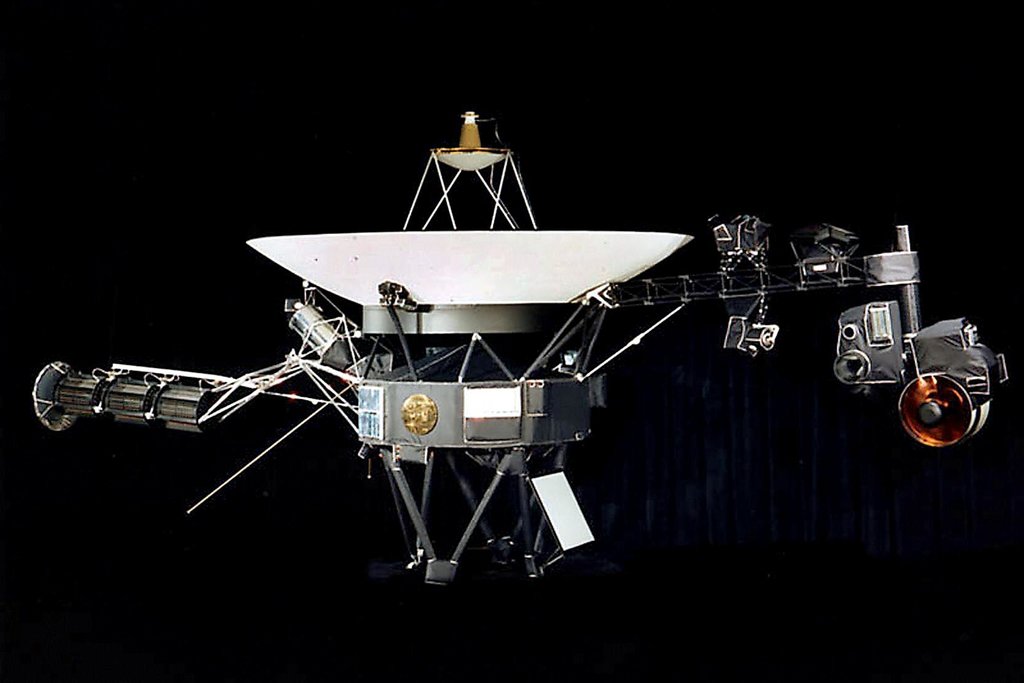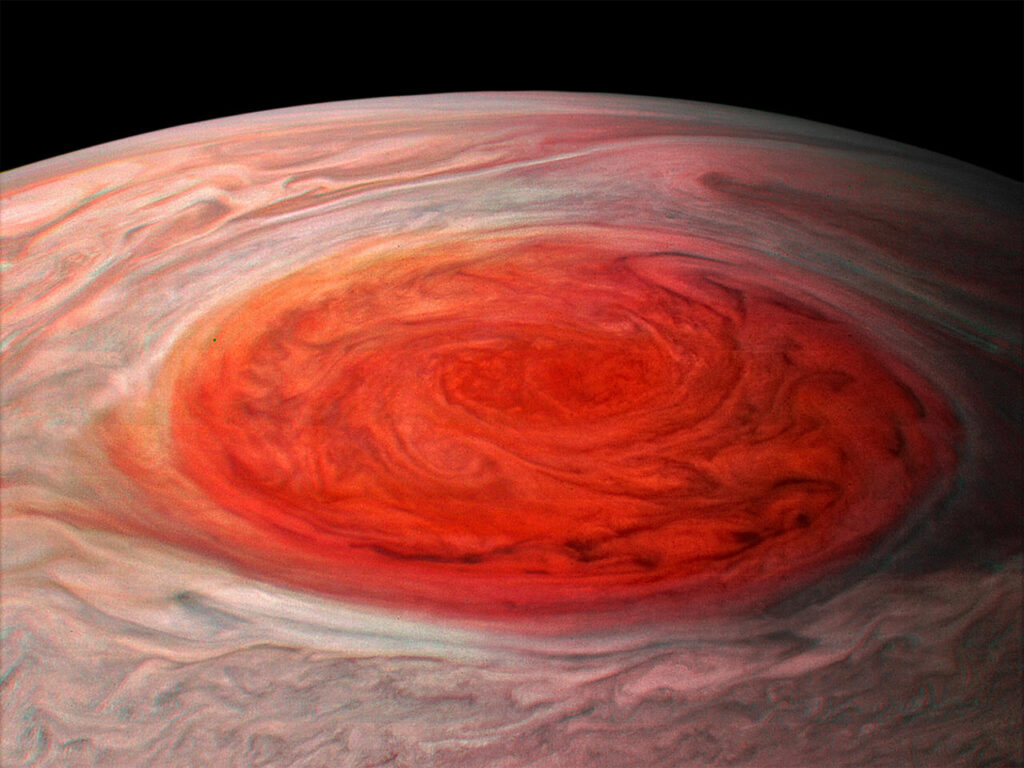In 1989, 12 years after leaving Earth, Voyager 2 became the first spacecraft to fly past the mysterious planet of Neptune.

At this point, very little was known about the planet, and scientists had only predicted its existence without actually observing it.
As it flew by, Voyager took the very first images of Neptune, showing a smooth blue ball with a giant dark spot right in the center.
Read: HOW FAR CAN VOYAGER TWINS GO BEFORE THEY LOSES CONTACT WITH EARTH.
This dark spot turned out to be a gigantic storm. 5 years later, Neptune was observed again, this time by the Hubble Space telescope.
When scientists received the images, they were stunned to see that the dark spot had completely disappeared.
They assumed that Neptune’s enormous storm must be similar to Jupiter’s Red Spot, which has been around for at least 350 years.
The longest storm ever recorded on Earth was Hurricane John in 1994. It lasted 31 days and traveled over 13,000 kilometres as it wandered across the Pacific Ocean.
Although this is a monumental storm by Earth standards, it’s nothing compared to the storms on Neptune and Jupiter, which can last for months, years, or even centuries.
On Earth, the power of a hurricane comes from warm vapor evaporating from the sea. This forms dense clouds which release heat into the air.
In the right conditions, this creates an area of low pressure with warm air rising and cooler air being sucked in at the bottom.
Since the Earth spins at a higher velocity closer to the equator, winds travelling towards the area of low pressure begin to curve which causes the hurricane to spin.
A hurricane will usually start to dissipate once it reaches land, where it no longer receives the warm vapor it needs to keep the cycle going.

Unlike typical cyclones on Earth, the Jupiter’s Red Spot is an anticyclone which forms around an area of high pressure.
The red spot is powered by two jet streams on either side which give the storm a constant spin but stop it from moving across the planet.
While a storm on Earth is powered by the heat from the sun, a storm on Jupiter is powered by the heat from its metallic core, which could be as hot as 50,000 degrees.
The combination of rising heat and fast-moving clouds are what push the Great Red Spot around with speeds of up to 680 km/h.
Since Jupiter is a gas giant, it doesn’t have the contrast of ocean and land to act as a barrier. The storms on Neptune form around a similar region of high pressure, deep in the atmosphere.
White clouds of methane are commonly seen in regions of high pressure just before a dark spot form.
Once a storm on Neptune has grown to its full size, the winds at the edge of the storm can be travelling up to 2,100km/h, the fastest in our solar system.
Unlike Jupiter’s Red Spot, the storms on Neptune get pushed around the planet where they get shredded by powerful crosswinds.
Because of this, storms on Neptune typically last anywhere from a few months to a few years.
Read: 7 MINUTES OF TERROR: PERSEVERANCE ROVER’S RISKY MARS LANDING
Since Jupiter is much easier to see from Earth, our observations of the red spot go way back to 1665 when Astronomer Gian Domenico Cassini first discovered the giant storm.
Since then, we have been able to observe the red spot and watch it evolve over time. However, these observations have shown that the end may be near for this iconic storm.
When it was observed in the 19th century, the Great Red Spot was 40,000km long and 14,000km tall.
At that point, it could have swallowed 2 or 3 earths whole.
But by the time Voyager 1 flew past in the late 70s, it was almost half the size. Recent observations by the Hubble telescope show that the storm is currently shrinking at about 1000km per year, meaning it could completely disappear by the 2030’s.
As well as losing size, the main red spot seems to be breaking off into smaller streams and darkening in color.
Scientists believe that since the storm is reaching higher into the atmosphere, the top of the red spot is exposed to more UV light which darkens the color of the chemicals.
But, like predicting the weather here on Earth, there is still so much that we don’t know about these gigantic storms.
When Neptune’s Dark Spot was first discovered, scientists thought that it had been around for centuries just like Jupiter’s storm.
The Great Red Spot is also far hotter than we initially imagined, with parts of its upper atmosphere exceeding 1300 degrees.
Even with the increases in our observational technology, there is still so much knowledge trapped inside the boundaries of these giant, mysterious planets, waiting to be discovered.
So, although we might be losing one of the most iconic features of our solar system, the observations we make of it will give us a better understanding of how nature operates throughout our solar system.
Additional Resources:
